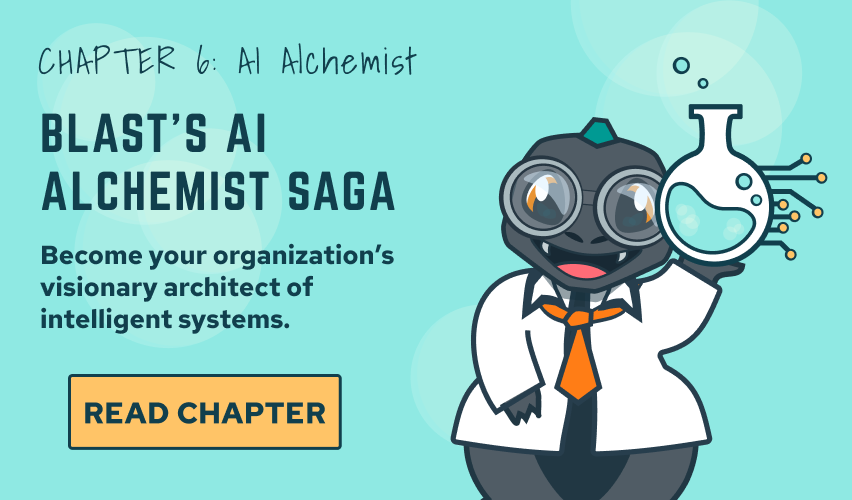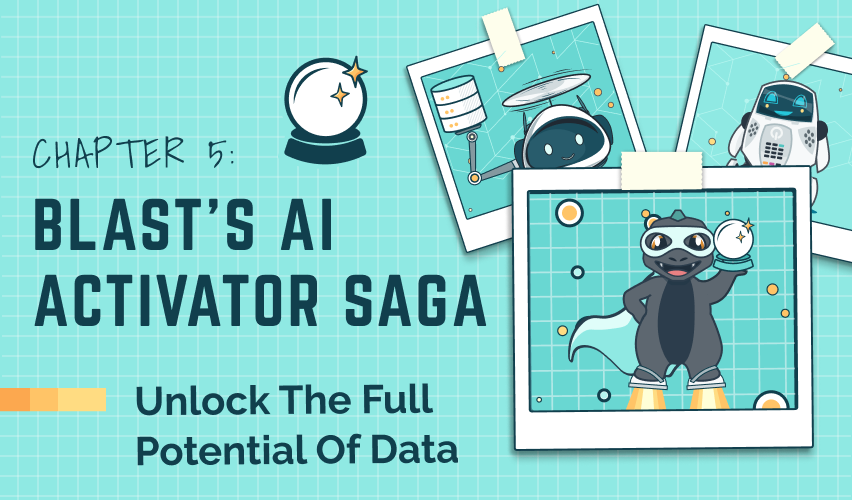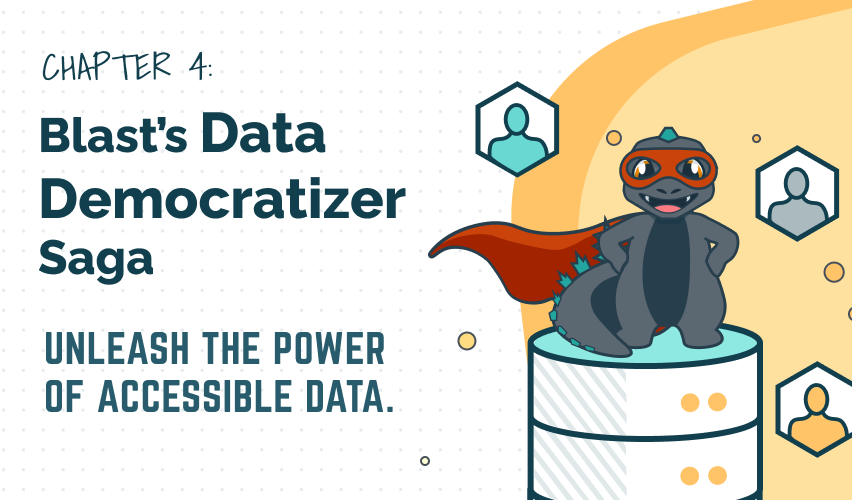Knowledge Burst Blog Series
Web3: The Future Is Here And Now
By Frank Ricotta, CEO & Founder, BurstIQ
Let’s explore how the internet has changed our lives, compare it to a Web3 world, and learn how blockchain technology is poised to make the next generation of the internet ethical and secure.

Consider how society has changed over the last 30 years because of the internet. Have you made online purchases? Googled a recipe for a family dinner? Searched how-to videos on YouTube to do something around the house? Connected with friends on Facebook or Instagram, or voiced your opinion on Twitter? Or how about looking up the fastest route on Waze to get to your desired destination? If so, you are experiencing web 2.0 (Web2). It has been nothing short of amazing. Yet, here we are again are, standing on the precipice of another tectonic shift. The fact is, we are experiencing aspects now.
We’ve come a long way! In this blog, I’ll discuss how the internet has evolved, what’s next, and why it matters. The figure below puts it in chronological order with some examples of the overall market evolution.
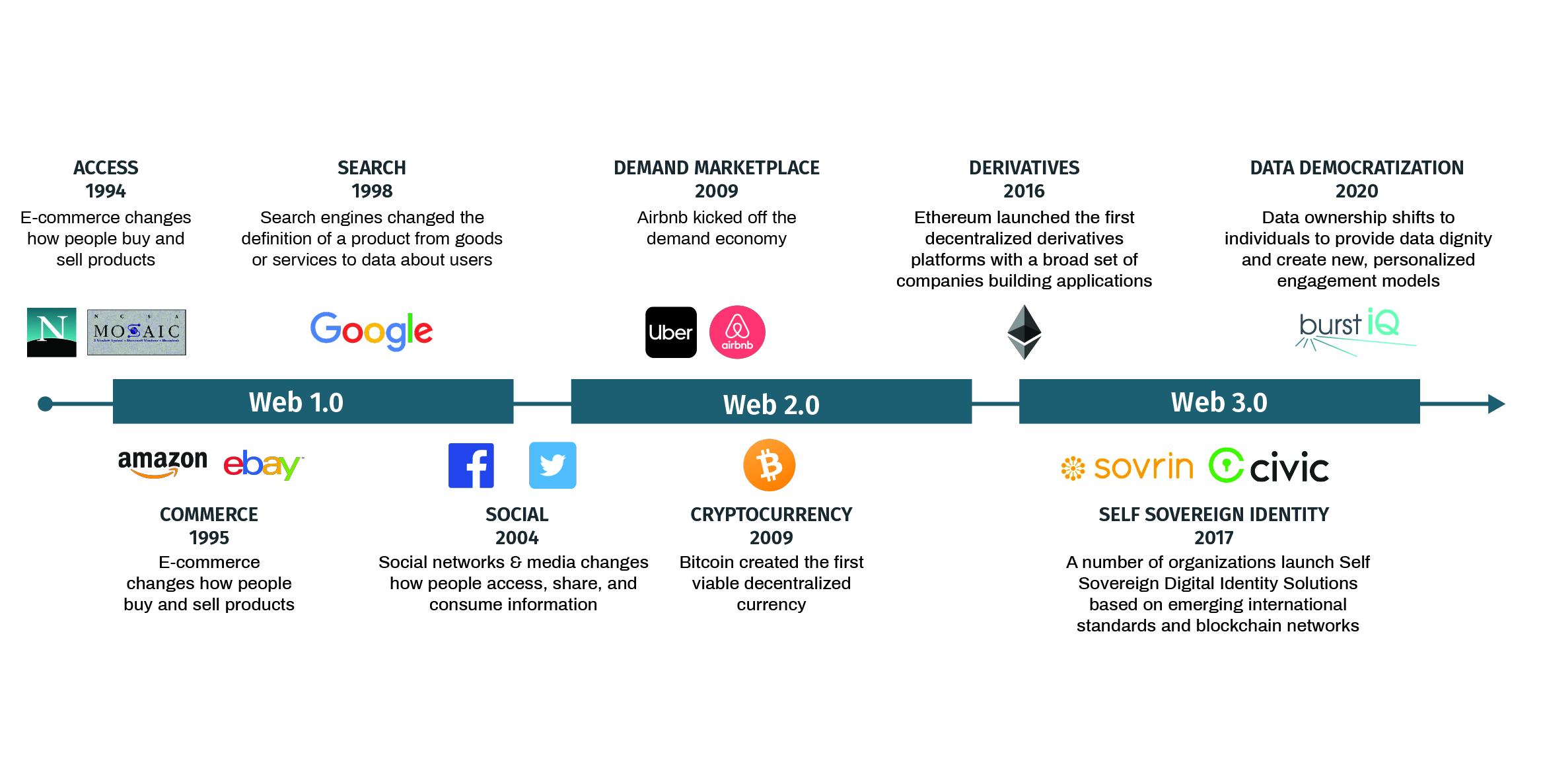
As a fun side note, if you wonder what some of these companies and sites looked like throughout the years, you can always visit the Wayback Machine and experience it firsthand.
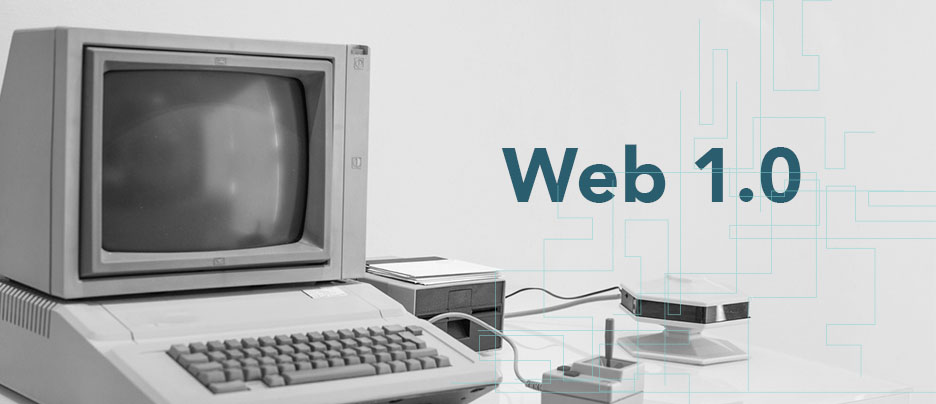
The Internet Is Born (…And Grows Up Quickly)
Web 1.0
Web1 was the first version of the World Wide Web. Internet users old enough to recall will never forget the grating sounds of a modem trying to connect online. In a Web1 world, there were fewer content creators, and the vast majority of the users were content consumers.
Websites were simplistic, with static web pages that lacked interactivity. However, anyone could create one; anyone could publish information, and, over time, search engines such as Google allowed us to look for things we were interested in reading.
Additionally, we see the early development of e-commerce sites such as Amazon and eBay in this period. Web1 also kicked off the dot-com boom and culminated in the crash of 2000.
The protocols and methods used to create these websites were cumbersome and required programmer expertise to navigate them. Yet, these protocols took root as HTML laid the groundwork for the internet explosion.

Enter Web 2.0 (Web2)
The next phase of the internet is Web2. Web2 was first coined in 2004 by Darcy DiNucci, an information architect. She described Web2 as a “synergistic phenomenon” marked by a shift from static websites to dynamic user-generated content. In other words, Web2 is about allowing businesses and the general public alike to use the internet to create and publish content and share it collaboratively. One might even say it brought us web-as-a-platform. Some key aspects include:
The social wave
Web2 allows users to interact with each other directly; some call it participatory media. Online engagements can be done through social media platforms like Facebook and Twitter or in forums and comment sections on websites. This ability to engage with others is what makes Web2 so powerful – it allows people from all across the globe to come together and share their ideas.
Democratized content creation and consumption
Web2 led to the rise of “user-generated content” (UGC). UGC is content created by the public rather than professional journalists or content creators, such as blog posts, videos, and tweets. It’s become an important source of news and information (or misinformation), and it allows people to share their unique perspectives of the world. UGC is a big hit, as people want an online presence or notoriety, and it has played a major role in the spread of news and information.
Influencers
Web2 has also spawned a new generation of online businesses that rely on user interaction and engagement.
Key Opinion Leaders (KOLs) no longer need academic credentials; they only need to have funders and followers. These businesses or individuals often use social media platforms to drive traffic to their websites and generate sales.
Demand economy
These social and UGC trends play a big role in the evolution of e-commerce, particularly in the emergence of the demand economy and crowd marketplaces. Companies such as Airbnb, Uber, and Lyft, for example, disrupted existing conventions in industries such as hospitality and transportation.
Behavioral targeting
Web2 also gave rise to a new, more personalized marketing era. The concept of delivering ads directly to a user on any page has changed how marketers can engage with their markets. Companies can create targeted ads to influence buying behavior using online user activity and cookies to track every click. I think we can all agree it’s a little creepy to feel surveilled to this level, but it’s become the price of providing so much of our personal data online.
The era of big tech
For the most part, the market leaders in all these categories are built on centralized platforms and have achieved a winner take most status.
Chris Dixon from A16Z explained how this evolution occurred. In the beginning, these centralized platforms did anything to attract users, developers, and other businesses to create a network effect or multi-sided market. Once on the platform, the work to lock them in and switch from “attract” to “extract.”
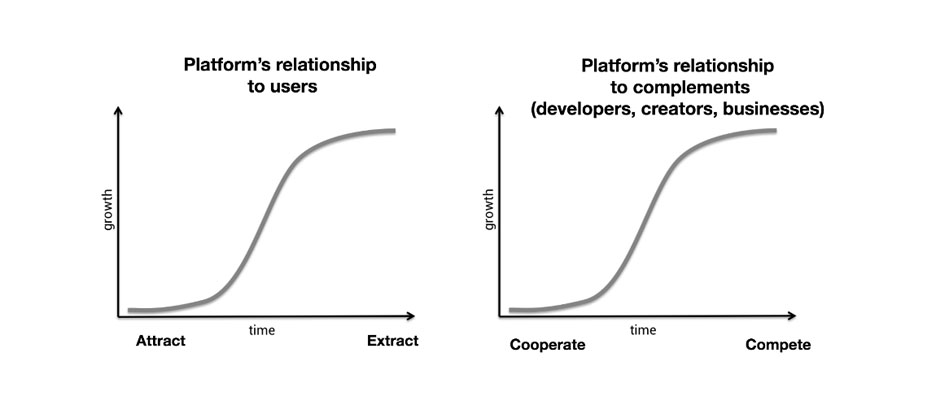
Centralized platform providers extract value from the connections they make between businesses and customers. They extract value from repurposing data. They extract value by creating algorithms to influence, control, and then monetize behavior. They are the central authority in this equation.
The model isn’t necessarily flawed in and of itself, given that this is what Web2 enabled. It’s a natural progression. However, the model hits a point of diminishing returns. Many of these platforms become too powerful and too controlling, limiting what they intended to facilitate.
It is safe to say that if one company, like Meta, for example, or a small group of big tech companies was able to control the “metaverse,” it would be more powerful than any nation-state. This holds true if one platform were to control the majority of data that powers AI as well. It’s why many science fiction novels portray this leading to a dystopian society – 1984, Snow Crash, Ready Player 1, the Matrix, and more.
Overall, Web2 has had a significant impact on the way people use the internet. It has led to a shift towards participatory media and social networking, and it has spawned a new generation of online businesses. Web2 changed the way we communicate and share information, and it changed the way we buy things and paved the way for even more innovation.
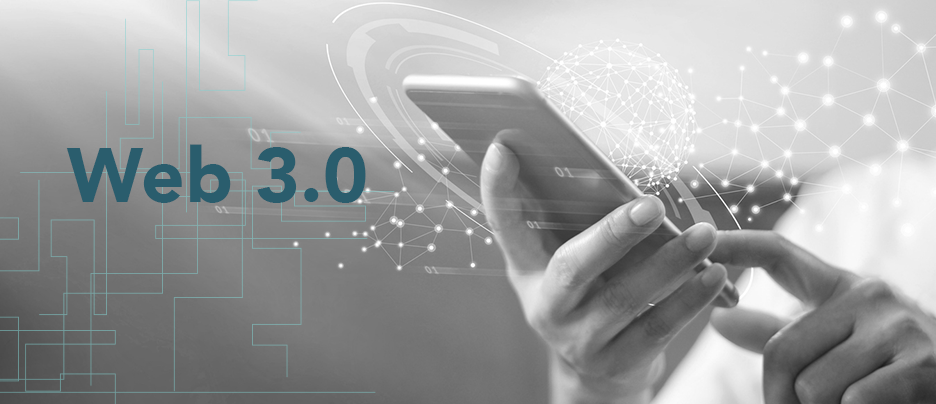
The New Thing – Web3
I think it is safe to say that there really isn’t any one definition for Web3. For me, I think simple is always best. Web3 is the next generation of the internet, one built on decentralization — a decentralized web. Of course, there is more to it.
Early on Web3 referred to the semantic web. Tim Berners-Lee first coined the term to describe a web of data. Data is formatted in a way that machines can process. In 1999, he described it this way:
“I have a dream for the web [in which computers] become capable of analyzing all the data on the web – the content, links, and transactions between people and computers. A “Semantic Web,” which makes this possible, has yet to emerge, but when it does, the day-to-day mechanisms of trade, bureaucracy and our daily lives will be handled by machines talking to machines. The “intelligent agents” people have touted for ages will finally materialize.” Tim Berners-Lee, Weaving the Web.
It wasn’t until the emergence of blockchain that this definition morphed to Web3. Gavin Wood, one of the co-founders of Ethereum, coined the term in 2014. Since then, it has become a term for everything internet NextGen, whether you like to use Web3 or Web 3.0.
I think the best way to understand Web3 is to take it from two perspectives. First, it is important to understand the key technologies. Second, and I believe, more importantly, is understanding the culture and philosophy behind Web3.
Five Critical Web3 Technologies That You Should Understand
Self sovereign digital identity
A digital identity includes all the information that exists about you in digital form. It contains personally identifiable information (PII) and online-behavior information such as purchases, social media, search history, and more. In a Web2 world, you may own your identity, but someone else owns the data about you that comes from living online. In a Web3 world, self sovereign identity becomes critical to achieving some of the underlying value aspirations. I personally believe this is a tipping point as to whether we head toward a dystopian world or a society that genuinely lifts people—that tipping point centers around who owns your digital identity. If we continue using the centralized, “winner take most” models of Web2, market leaders will own our digital identities, and as a result, a dystopian world becomes closer to reality.
Thankfully, Web3 bases many principles on the idea of Self-Sovereign Identity. Individuals should own and control their digital identity, their data, and any associated personas they may dream up through metaverse land. It is also important to note that identity can extend beyond people to things, places, and organizations.
Identity ownership is fundamental in the real world or how it extends to the digital world. Your rights should not stop at your device. Nor should your rights stop at owning your personal data. Technologists are already talking about digital twins and how our data can transform into an AI engine that is an extension of us.
The data web
The data web is more commonly referred to as the semantic web I mentioned previously. In my first blog in this series, I talked about how rapidly our data repository is growing on the internet — far faster than anyone can personally consume. More importantly, the distributed web has connected this information into a true global data sphere. These connections and links create an opportunity to build layers of understanding previously thought impossible just a few short years ago.
Many technologies and data scientists are “semantic web purists .” Their perspective is that to achieve the potential of the data web; we need to drive to a common set of data standards. Their view isn’t practical or even achievable. We will never be able to keep pace with the scope, complexity, and dynamic nature of data. Rather, I think the true breakthrough advancements will come when we can create an understanding layer that can consume data in any form and present it in a consumable way to a person or machine. This is the true value multiplier. When we can unify data in this way, we will undoubtedly experience innovation at warp speed, including an explosion in real Artificial Intelligence and not just systems disguised as such.
The spatial web
The Spatial Web adds a multi-dimensional perspective to Web3; dimensions blurring the line between the physical world and the virtual world. Augmented reality will extend to a full virtual reality that enables interactions between people, places, and things in the real and cyber worlds without much of a distinction. The Spatial Web will eliminate boundaries between digital content and the physical world. The Spatial Web is what many envision as the metaverse in many ways.
The trust network – blockchain
Trust is foundational to Web3. Web3 is often described as “trustless,” but this characterization is more than a bit misleading. The term “trustless” implies no trust. The term was first applied in the cryptocurrency space and was used to describe a process where one does not have to depend on a trusted entity to conduct and verify transactions. In other words, no person must trust another person for something to be executed in a valid and verifiable way.
Enter blockchain and why blockchain is so powerful as the foundational technology layer for Web3. Trust is inherent in the network. Blockchain networks create connections, broker transactions, verify value, and convey ownership.
Enter blockchain and why blockchain is so powerful as the foundational technology layer for Web3. Trust is inherent in the network. Blockchain networks create connections, broker transactions, verify value, and convey ownership.
Decentralization
Web3 supports a decentralized internet on many levels. Decentralization of data, ownership, control, value, and power — a true paradigm shift. This shift is made possible largely due to the capabilities of blockchain technology. First, there are no centralized servers. The network runs on a peer-to-peer model; computational resources, data, and content are distributed across multiple nodes in the network, which can be managed and instantiated by anyone. Availability, security, and reliability all improve as the network grows.
Data ownership and control are decentralized to individuals, along with the value and leverage inherent in that data. I plan to dedicate a future blog focusing on how decentralization impacts health, educational, and financial access. But for today, the takeaway is that blockchain helps distribute benefits to the content owner and away from the centralized platforms of the Web2 world.
It also allows for decentralized governance, decentralized autonomous organizations (DAOs), and the ability to create decentralized financial structures. Think cryptocurrencies, governance tokens, NFTs, DeFI, and micropayments.
Artificial intelligence – Web3 or not?
AI is not dependent on Web3, nor do I think it is a critical technology for Web3 solutions. I know some of you disagree with this statement, BTW.
I do believe AI is a critical technology, but one that can just as easily develop on Web2 as on Web3. Conversely, I also think that because of Web3, we have a better chance of developing and incentivizing ethical AI solutions and creating an environment for collaborative intelligence (AI + people) to flourish. I plan to address this topic in more detail in an upcoming blog.
The philosophy of Web3 and blockchain
Blockchain is special, and by extension, Web3 has built upon it. I often say that blockchain is more a way of doing things than the technology itself. It is not only because of the way the technology works but also because of the power of the vision and culture behind it. That culture shares common beliefs: decentralization, democratization, individual empowerment, self-sovereign identity, security and privacy, ownership, shared incentive, inclusion, and a desire to make the world a better place.
These foundational beliefs have become the core mantra for Web3, the fire has spread, and there is no stopping it now. The internet didn’t become the internet because of technology. It became the internet because of the believers and evangelists who saw a future of connectedness. Blockchain and Web3 enthusiasts inherited and now share this passion.
Powering new communities
In a blog I wrote a couple of years ago called Blockchains Connections Communities and Hope, I summed it up as follows: I think it is worth revisiting. Time has only served to strengthen my conviction:
“Fundamentally, blockchains are networks. Networks create connections, connections create communities, and communities create markets. Communities drive change, create movements, disrupt conventions, and even foster compassion. And one more thing. Communities create hope.”
Time has only served to strengthen my conviction. People often ask me what hope has to do with technology. Hope is a potent force for positive change. Web3 extends the power of hope to those who believe they now have an opportunity to make a difference and pursue a dream…make a difference in my life, the environment, my little part of the world, and by extension, the world itself. I hope there is someone out there who I can connect with, who believes what I believe, and who supports what I’m doing. “I” doesn’t mean me; “I” refers to the global community rapidly growing around Web3 and, from a BurstIQ perspective, our platform and community. It is a community that shares our Why: every day, they share their voices of hope and optimism because of what we can do together. What motivates me to preserver, what gives me hope for the future, is that we are not just a technology company. We are a company that builds communities, communities of hope. It is why I’m absolutely convinced that Web3 will succeed and that no one company will own it.
A promising new world
The internet has come a long way since its early days. It’s now more important than ever to make sure that the evolution of the web is done in an ethical and responsible way. That’s why we created LifeGraph, which is rooted in blockchain, Web3, and the philosophy behind it. If you share these core beliefs, we’d love to be part of your community and for you to be part of ours.
About BurstIQ
BurstIQ fuels trust-first digital strategies with human data. LifeGraphs® take the complexity out of managing sensitive human data, freeing organizations to build trust through hyper-personalized health, work, and life digital experiences. In an era of data abundance, LifeGraphs promote trust between organizations and the individuals providing data through blockchain-powered governance and consent. The LifeGraph Network provides a single source of truth and an intelligent ecosystem, helping businesses gain a deep understanding of the people they serve. Armed with granular insights, they can deliver more value in digital experiences and make an increasingly digital world more human.

